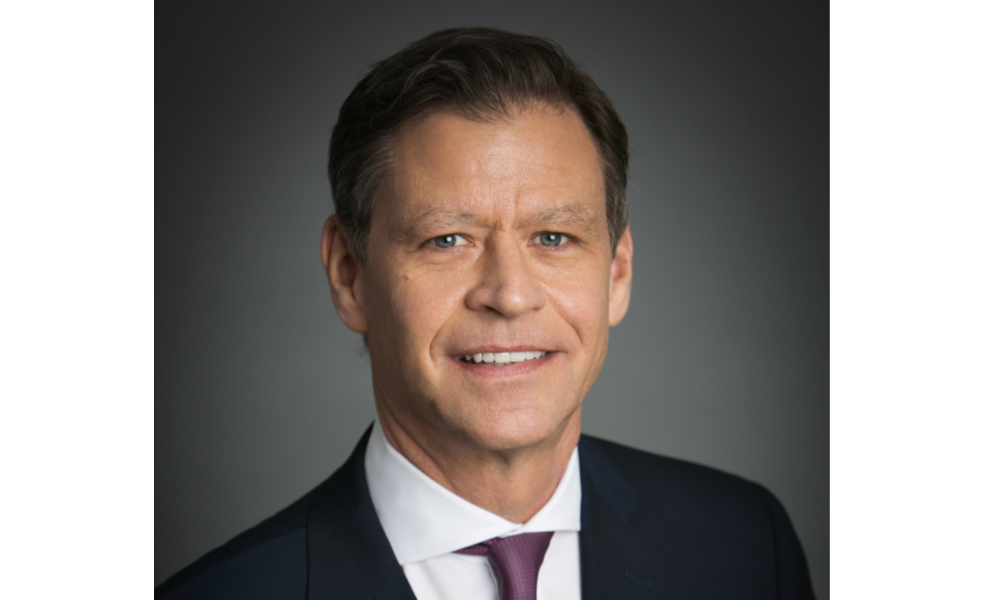Office / Leasing
Inside the Boardroom: Ric Clark
By
Joseph Richter

Ric Clark, Managing Partner of WatermanClark, joined us for an interview. We discussed workplace flexibility, a capital void in the office sector, and the redevelopment of Lever House. The former CEO of Brookfield Property Partners also explained why his firm is solely focused on New York City.
Daily Beat: Jamie Dimon who initially pushed back against hybrid work appears to be coming around to it. He said that only half of J.P. Morgan’s employees will be in the office five days a week and that for every 100 employees, the company will need seats for 60 to 75 on average. What does the future of office buildings look like?
Ric Clark: This concept of flexibility and working-from-home at times has been a positive. As an owner of office buildings, this is not a bad thing and will help companies retain and motivate their employees.
When I was CEO of the real estate business at Brookfield, we were always focused on increasing diversity in the workforce. In order to hire more female senior executives, we realized that we had to provide more flexibility to working parents and they worked from home some of the time.
This idea of flexibility is really positive moving forward. Over the course of the last three decades, the densification of office space has really persisted. We went from several hundred square feet per employee where mostly everybody had an office to less than one hundred square feet per person.
Daily Beat: WeWork spaces were down to 75 square feet per employee.
Ric Clark: If some companies decide to move forward with hot desking –– with the caveat that many have tried in the past and it didn’t work –– it’ll be somewhat offset by the fact that there’s a reversal of this densification that’s happened over the last several decades.
I have the greatest respect for Jamie Dimon. He’s possibly the best CEO that’s ever walked the planet. I read his annual reports and letters to shareholders religiously.
I think there’s an important analogy though to when his firm was coming out of 9/11. J.P. Morgan and many others spoke about “de-campusing” at the time. Everybody thought that tenants would no longer be interested in upper floors of an office building. Ironically, we now see that J.P. Morgan is building a new HQ at 270 Park to accommodate 15,000 people. The adjacent building will house 8000 to 10,000 more employees.
Daily Beat: And One World Trade is now 95% occupied. Durst just announced a new lease there.
Ric Clark: We’ll get through this period. Granted, there will be tweaks to commercial real estate that come out of it, but I do not believe that companies are going to use far less space. We’re focused on these types of changes at our redevelopment of Lever House.
Daily Beat: I was in One Vanderbilt last week and it’s really nice, but it’s still an office building! I guess we’ll have to see how it plays out.
Ric Clark: The bottom line is having people in the office together makes companies more productive. The spontaneous creativity that comes from people running into each other really benefits businesses and helps build culture. It also gives you the ability to train the next generation of leaders. Climbing the corporate ladder requires coming into the office.
Daily Beat: Technology has been the great growth engine for the office sector since the Great Financial Crisis. Do software engineers still need the same amount of space?
Ric Clark: I’ll be the first to say that I’m not unbiased. Obviously I have a huge investment in commercial real estate, but since I’m investing my own capital, I try to think about it as unbiased as I can.
I do believe that there are advantages and disadvantages of working remotely. To have flexibility is a good thing, but I think there are all kinds of social and behavioral issues that come from working at home 100% of the time.
Daily Beat: Tishman Speyer is due to make an impressive profit on Moffett Green campus in Silicon Valley after landing Facebook as a tenant. They paid $365 million in April 2021 and are investing $290 million in renovations. Bids are expected to come in $1 billion at a 4.25 cap rate. This environment clearly lends itself to excellent opportunities.
Ric Clark: As someone who has been involved in the real estate business for a long time, the best transactions that I’ve ever worked on were the deals that I did during periods of uncertainty.
There’s less capital chasing office buildings at the moment. To me, when there is a capital void, that’s when there’s the best opportunities. I am personally a very long term believer in New York City and in office properties.
As the world’s population continues to grow, there’s this trend towards urbanization. There are predictions that in a couple of decades that 70% of the world’s population will live in cities. That number today is barely over 50%.
Millennials are increasingly a greater share of the U.S. workforce, a trend that will continue. Companies follow talent to hire employees and those people want to be located in big cities. I think New York is a good example. At the beginning of COVID, the apartment vacancy rate dropped to 20% and rental prices now surpass the numbers from March 2020.
The market has been pretty active, particularly from companies involved in the innovation and technology sectors. They are here because of the talent and transportation system.
In Silicon Valley, a young 23 year old trying to make ends meet probably needs to commute over an hour to find an affordable place to live. In New York, you can hop on a subway and find an affordable place within a 30 minute subway ride. Big cities have a lot going for them.
Daily Beat: Would you buy in Miami or Austin? We see many investors branching out to these hot markets.
Ric Clark: I am personally a little contrarian and I don’t like to follow the herd. I also think it’s important to separate fad from trend. It remains to be seen whether that movement is just in response to COVID. Personally, our firm has not been investing in those office markets. There’s a lot of capital chasing those opportunities, so I’m not sure the deals are that great. I believe in the long term dynamics in New York City and this is where the bulk of our focus has been.
Daily Beat: How’s the $100 million redevelopment of Lever House coming along? I saw that you are going to be targeting asking rents of $200 per SF.
Ric Clark: We are really happy to partner with Brookfield on the project, which has a fascinating history. The Lever Brother Soap Company built the property in the early 1950’s when they were moving their U.S. headquarters from Boston to New York. When relocating, they wanted to make a statement, so they bought this prominent piece of land on Park Avenue and hired Gordon Bunshaft and Natalie de Blois, two of the hottest architects at the time.
They designed the building to maximize light and air and also created 15,000 SF of outdoor space. It was way ahead of its time and ushered in the era of modern architecture with glass and steel in New York City. Interestingly, the President of Lever Brothers was so passionate about the project that he quit to become an architect full-time.
Daily Beat: It seems this redevelopment is trying to cater to a world where there’s a new standard hospitality for office buildings.
Ric Clark: This transition was taking place before the pandemic. The world economy is largely driven by 20 and 30 year olds and this millennial age cohort is making up an increasing percentage of the global workforce. Their focus has always been on flexibility, collaboration, health, happiness, and choice.
With technology and laptops, workers no longer want to be glued to their desks. They want the flexibility to move around the office during the day –– it makes them happier and more productive. COVID accelerated this trend.
In redeveloping Lever House, we wanted to reintroduce that concept of hospitality and collaboration. We’ve taken the third floor, which has historically been rented to an office tenant and turned it into a tenant-only hospitality center.
The most likely scenario for leasing the building will be to single or double floor users versus one user for the whole building. We wanted to create this center that all of the occupants could use at any point during the day. A place where they can eat meals, grab a cappuccino, buy food, or get some work done.
We’ve also incorporated wellness and therapy rooms in the building. It’s not a conventional gym, but if you want one-on-one fitness training or if you have a sports injury and need masseuse or a chiropractor to help take care of you, that’s all there in the office building. We will also have a bike storage room and an end-of-trip, shower facility with lockers. Our team is very focused on responding to these desires for flexibility and health + wellness.
*The interview has been edited and condensed for clarity.





